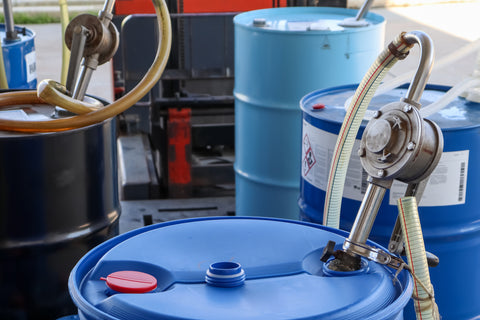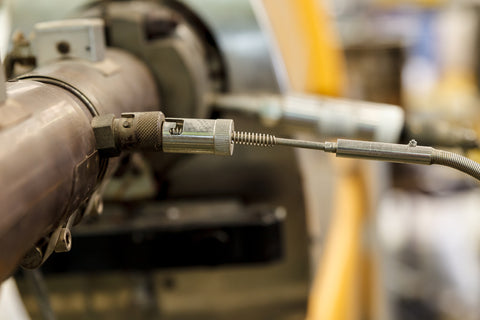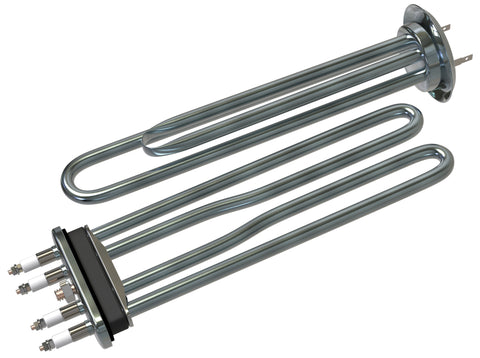The Allure of Honey: More than Just a Sweet Treat
Honey has been a revered food and medicine throughout history. Beyond being a delicious sweetener, its health benefits and role in various manufacturing processes make it a product in high demand. As a result, honey is often sold in bulk quantities, like in 55-gallon drums, to meet the needs of manufacturers and large-scale users. A 55-gallon drum of honey can weigh between 650 and 750 pounds, a substantial consideration for anyone handling or transporting it.
Origin and Significance of the 55-Gallon Drum
Brief History of the Drum
From oil to honey, the 55-gallon drum has been a staple for storing bulk products for several decades. Originally popularized for the oil industry, these drums found their way into various sectors due to their optimal size and efficient storage capabilities. Manufacturers choose these barrels not just for their durability and volume but also for their standardized dimensions, which make stacking, shipping, and handling a more streamlined process.
Why Raw Honey is Stored in Such Large Containers

Storing raw honey in large barrels ensures that its quality is maintained and it's protected from external factors such as contamination and moisture. In the beekeeping industry and food manufacturing, the barrel has become a preferred storage method because it allows for easy access and dispensing. Additionally, bulk honey purchases can offer cost savings, which is crucial for businesses that require raw honey as a primary ingredient, enabling them to pass on competitive pricing to their customers or to manage their production costs more effectively.
Factors Determining the Weight
Density of Honey
The density of honey can vary based on its composition, floral source, and water content. Typically, raw honey has a higher density than processed variants, making it heavier per unit of volume. Different types of honey, derived from different flowers or blends of flowers, can also have slight variations in their density due to their unique sugar and moisture profiles.
Impact of Temperature on Honey’s Consistency
Temperature plays a significant role in determining honey's consistency and, by extension, its weight. For instance, raw honey stored in colder settings becomes more viscous and thicker, which could slightly affect its density as thicker raw honey might have fewer air bubbles. Conversely, in warmer conditions, raw honey tends to be more fluid, potentially leading to a minor reduction in heaviness overall.
The Role of Barrel and Drum Heating Jackets
Maintaining the right temperature and consistency is vital when it comes to storing and bottling honey. Honey, in its natural state, can crystallize over time, especially in colder temperatures. This crystallization can make it difficult to handle, bottle, or process the honey for various uses. Enter the innovative solution of barrel and drum heating jackets. These devices are designed to wrap around 55-gallon drums or other storage containers. They provide consistent and controlled heat to the contents inside, ensuring that the honey remains at an optimal temperature.
The Weight of the Empty Drum
When answering the question, how much does honey weigh? One cannot neglect how heavy the barrel is alone. It's crucial to note that the importance of an empty drum, often made of steel or sometimes plastic, can significantly add to the overall load of a filled drum. Depending on the manufacturer, the material used, and the drum's thickness and design features, this weight can vary but is an essential factor to consider, especially when transporting or storing these drums in facilities.
How Much Does a 55-gallon Drum of Honey Weigh?
Breaking Down the Math
To understand how much a 55-gallon drum of honey weighs, one needs to account for both the honey's volume and its specific density. The answer hinges on the density of the honey, which generally hovers around a certain value and the weight of the drum itself. By multiplying the average density of honey by the volume of the drum and then adding the load of an average empty drum, the total estimated weight can be derived. This gives businesses and transporters a ballpark figure to work with.
Variables
The weight of a drum of bulk honey isn't a fixed value; several factors can cause it to fluctuate. Variables such as the exact quality and type of honey, its water content, storage location, and the processes it has undergone can all have a slight impact on the final weight. For instance, honey that has been heated or filtered might have a different density compared to raw, untreated honey.
The Practical Implications of Drum Weight
Transporting a Drum of Honey
When it comes to transporting drums of honey, load plays a pivotal role. Understanding how heavy honey is vital for logistical considerations. This data helps in choosing the appropriate vehicle for transport, determining load limits, and ensuring the safety of the content during transit. Moreover, by being aware of the weight, transporters can comply with regulatory requirements, avoiding potential fines or penalties.
Storing and Handling Considerations
Knowing this number is critical not just for transportation but also for storage and handling. Knowing the total load aids in making informed storage decisions, ensuring that shelving or storage areas can bear the load. Furthermore, correct handling practices are crucial to prevent accidents or injuries, especially when moving these heavy drums. Proper storage and handling can also safeguard the drum from potential external damages like rust or dents, which could compromise the quality of the honey inside.
Protecting Honey During Storage
Honey's quality and flavor can be affected by temperature fluctuations. Using a heating jacket can protect the honey from the adverse effects of cold temperatures, preventing unwanted crystallization. This ensures that the honey retains its smooth, golden texture, making it easier to handle and preserving its quality for longer periods.
Controlling Viscosity for Bottling and Other Processes

When it's time to bottle the honey or use it in other processes, the honey's viscosity, or thickness, plays a pivotal role. Honey that's too thick can be challenging to pour, measure, or mix. Drum heaters prove invaluable here. By gently warming the honey, they reduce its viscosity, making it flow more easily. This simplifies the bottling process and ensures that the honey can be precisely measured and mixed for various products.
In conclusion, barrel and drum heating jackets are indispensable tools in the honey industry. They ensure that honey is stored under optimal conditions and is always ready for processing or packaging. For anyone dealing with large volumes of honey, investing in these devices is a wise decision that guarantees quality and efficiency.
Fun Honey Facts
How Many Bees Does It Take to Fill a Drum?
Here's a staggering thought: to produce a single pound of honey, bees might need to visit over 2 million flowers and fly over 55,000 miles. Now, when you consider the quantity required to fill a 55-gallon drum, it's a testament to these remarkable insects' unwavering dedication and hard work. Think of it as a massive collaboration of thousands upon thousands of bees, all tirelessly collecting nectar to produce this sweet treat.
The Sweet Weight of Nature’s Liquid Gold
A 55-gallon drum of honey is not just a measurement of volume but a testament to nature's bounty. Knowing how much a drum weighs is more than just a piece of data; it's a key to efficiently handling, transporting, and using one of nature's most cherished products. As you delve deeper into the world of honey, always be aware of the factors that can affect its weight and quality, ensuring that you get the best out of every drop. Additionally, the use of drum heaters for honey to ensure proper viscosity for bottling and other use cases.







